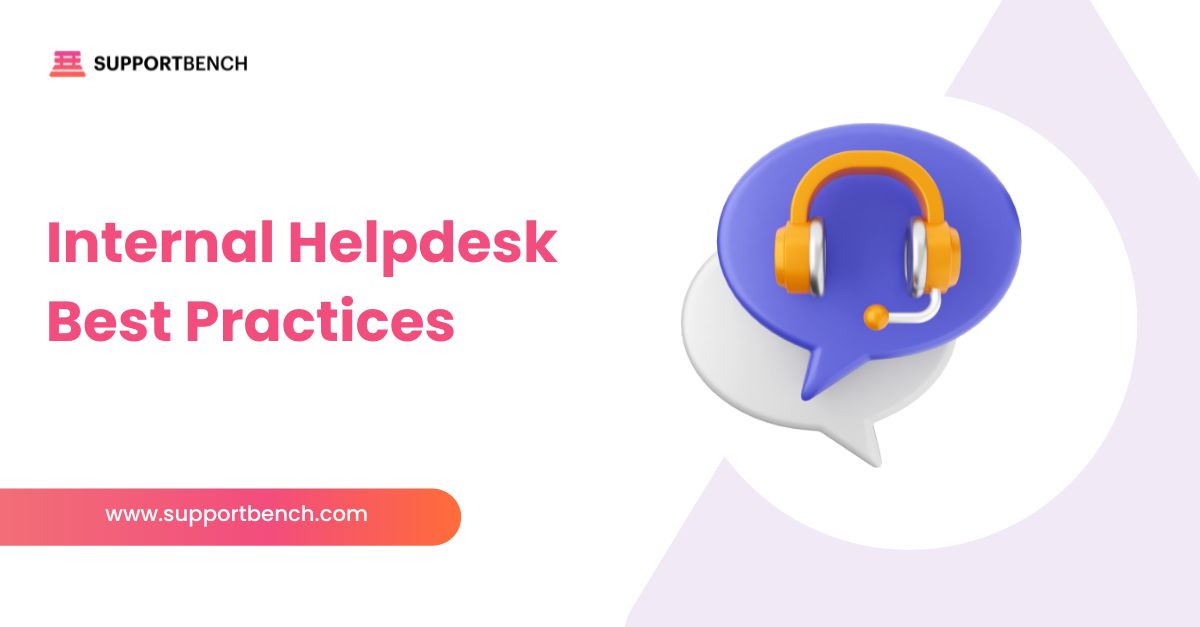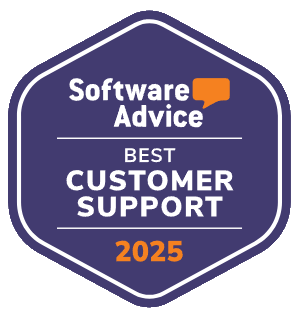If you’re only tracking how many tickets your team closed last week, you’re flying blind. High-performing support managers don’t focus on volume alone; they pay attention to the signals that move satisfaction, efficiency, and team health.
The right support metrics won’t just show where you are—they reveal where things break, where to make fixes, and when to scale. Let’s cut through the noise and get to what matters.
Here is the Quick Answer:
Support managers should focus on key metrics like First Contact Resolution, SLA Compliance, CSAT, and Cost per Ticket to improve team efficiency and customer satisfaction. This guide breaks down formulas, benchmarks, and strategic tips to track and act on these metrics effectively with tools like Supportbench.
Why Most Support Metrics Mislead And What to Track Instead
Most teams track what’s easy, not what’s effective. Metrics like “tickets closed,” “emails responded to,” or “average response time” may look good on a dashboard but rarely tell the full story.
A team could close 500 tickets this week, but if customers leave confused, agents burn out, and SLAs get breached without escalation, what did you achieve?
Traditional reporting treats metrics as proof of performance rather than tools for informed decision-making. Data often ends up in reports and slide decks that no one acts on. Worse, teams chase numbers that look impressive rather than those that drive real outcomes.
If you’re reporting on volume without context or measuring time without linking it to customer satisfaction, you’re just busy, not improving.
Focus instead on outcomes like reducing customer effort, improving First Contact Resolution (FCR), or enhancing Customer Satisfaction (CSAT). Select metrics aligned with these goals and consider factors affecting your cost per ticket, team morale, and consistent delivery.
Use platforms with Supportbench KPI dashboards that go beyond vanity stats. Real-time tools surface anomalies, highlight escalations, and link metrics across SLA compliance, CSAT trends, and agent workloads. The best metrics don’t just track history—they change what happens next.

Five Core Categories That Organize the Chaos
Not all support metrics are created equal. If you lump speed, satisfaction, and cost together, you get noise—not clarity. To make data actionable, organize every metric into one of these five categories:
| Category | Key Metrics |
| Efficiency | First Response Time, Average Resolution Time, Ticket Backlog Growth |
| Quality | Customer Satisfaction, Net Promoter Score, First Contact Resolution |
| Productivity | Tickets Handled per Day, Agent Utilisation, Average Handle Time |
| Compliance | SLA Compliance, Escalation Frequency |
| Cost | Cost per Ticket, Support Spend as % of Revenue |
Efficiency Metrics
These metrics track how quickly and smoothly your team operates. Key indicators include:
- First Response Time (FRT): Measures how quickly your team acknowledges incoming issues. A fast response reassures customers they are being heard—even if the full solution comes later.
- Average Resolution Time (ART): Tracks the time from ticket creation to full resolution. This isn’t about rushing but removing delays caused by approvals or complex workflows.
- Ticket Backlog Growth: Monitors unresolved tickets accumulating over time. A growing backlog can lead to poor response quality, burnout, and missed SLAs.
If these metrics trend negatively, you may be understaffed, misrouting tickets, or overwhelmed by unnecessary noise. Effective SLA and escalation tracking, along with improved triage processes, can help address these challenges.
Quality Metrics
Speed alone doesn’t guarantee a good customer experience. These metrics measure how customers feel about your support:
- Customer Satisfaction (CSAT): Collected through post-resolution surveys, CSAT gives immediate feedback on how well your team handled an issue. Track rolling averages and agent comments to spot trends.
- Net Promoter Score (NPS): NPS reflects overall loyalty by asking customers how likely they are to recommend your company. Use it alongside CSAT for a fuller picture.
- First Contact Resolution (FCR): Measures the percentage of tickets resolved on the first interaction, indicating efficiency and effectiveness in solving issues.
Quality metrics help identify gaps in customer experience that speed metrics alone miss. Real-time integration with tools like Supportbench ensures you can address issues quickly.
Productivity Metrics
Productivity metrics measure how much work your team handles and how effectively. These aren’t about micromanagement but about optimizing workflows:
- Tickets Handled per Day: Tracks the average number of tickets each agent resolves daily, helping identify capacity and bottlenecks.
- Agent Utilization: Measures the percentage of an agent’s logged-in time spent actively working on tickets. Balanced utilisation helps prevent burnout while maintaining productivity.
- Average Handle Time (AHT): Tracks the average time agents spend handling each ticket, including talk and after-call work. Lower AHT can indicate efficiency but should not compromise quality.
Low productivity often points to inefficient processes or training gaps. Use these metrics to guide workflow improvements and targeted coaching.
Compliance Metrics
Compliance metrics ensure your team meets agreed-upon standards and policies:
- SLA Compliance Rate: Measures how often tickets are handled within the defined service level agreements. Maintaining high SLA compliance is critical to customer trust and retention.
- Escalation Frequency: Tracks how often tickets are escalated to higher support tiers. Frequent escalations may indicate gaps in initial triage or knowledge base quality.
- Policy Adherence Errors: Monitors deviations from internal support policies. Identifying and reducing these errors helps maintain consistency and quality.
When compliance metrics slip, it’s a signal to review workflows and implement automated ticket analytics to enforce standards—freeing managers from manual oversight.
Cost Metrics
Support isn’t just a cost centre—it’s an investment that drives value. These metrics track spend and return on investment:
- Cost per Ticket (CPT): Shows the average expense to resolve a single ticket, factoring in labour, tools, and overhead. Use CPT to balance cost efficiency with service quality.
- Support Spend as % of Revenue: Measures how much of your company’s revenue is allocated to support functions. Monitoring this ratio helps justify budgets and strategic investments.
- Cost to Serve per Channel: Analyzes the expense associated with each support channel (email, chat, phone). Understanding channel costs helps optimize resource allocation.
To reduce costs without sacrificing quality, map spending against resolution rates and customer satisfaction. Cut what doesn’t contribute to positive outcomes.
Essential Metrics Support Managers Can’t Ignore
You can’t improve what you don’t measure. Below are the key performance indicators every support manager should track closely, with clear formulas and industry benchmarks to guide your efforts.
Support Metrics Formulas Cheat Sheet | |
| Metric | Formula |
| First Contact Resolution | (Tickets Resolved on First Contact ÷ Total Tickets) × 100 |
| Average Resolution Time | Total Time to Resolution ÷ Total Resolved Tickets |
| First Response Time | Total First Response Time ÷ Total Number of Tickets |
| Ticket Backlog | Total Open Tickets at End of Period |
| CSAT Score | (Number of Positive Survey Responses ÷ Total Responses) × 100 |
| NPS | % Promoters – % Detractors |
| SLA Compliance | (Tickets Handled Within SLA ÷ Total SLA-Applicable Tickets) × 100 |
| Escalation Rate | (Number of Escalated Tickets ÷ Total Tickets) × 100 |
| Cost per Ticket | Total Support Cost ÷ Total Resolved Tickets |
| Agent Utilization | (Total Time Spent on Tickets ÷ Total Logged Time) × 100 |
First Contact Resolution (FCR)
Resolving a customer’s issue on first contact is invaluable. High FCR indicates your team is effective, supported by strong product knowledge, clear documentation, and well-designed routing.
Formula: (Tickets resolved on first reply ÷ Total tickets) × 100
Benchmark: 70–79% for most support teams; higher in B2C, lower in complex B2B.1
Average Resolution Time (ART)
This metric tracks how long, on average, it takes to fully resolve a ticket. A long ART often signals workflow bottlenecks or delays in approvals.
Formula: Sum of resolution durations ÷ Number of tickets
Benchmark: Industry average is around 24 hours overall, varying by channel:
- Self-service: instant
- Phone: 3–7 minutes
- Live chat: 10 minutes
- Social media chat: 10 minutes
- Social media comments: 24 hours
- Email: 24 hours2
First Response Time (FRT)
The time your team takes to acknowledge an incoming ticket sets the tone for customer experience. Even a fast initial reply without a full solution reassures customers they’re heard.
Formula: Sum of all first reply times ÷ Total tickets
Benchmark: 24 hours for email, 60 minutes for social media, and 3 minutes for phone.3

Ticket Volume and Backlog
Volume measures demand, while backlog tracks unresolved tickets. A growing backlog threatens quality, increases burnout, and risks SLA breaches.
Formula: Open tickets at period end ÷ Total tickets received
Benchmarks (30-day unresolved tickets):
- Healthcare: 20
- Software: 50
- E-commerce: 100
- Financial Services: 1504
Customer Satisfaction (CSAT)
CSAT surveys ask customers “How did we do?” It’s a simple, direct measure but can fluctuate day-to-day. Track rolling averages and use qualitative feedback to coach agents.
Formula: (Satisfied responses ÷ Total responses) × 100
Benchmark: Strong scores range from 75% to 85%; Klaus’ 2023 benchmark is 85%.5
Net Promoter Score (NPS)
NPS gauges overall loyalty by asking if customers would recommend your company. It complements CSAT by reflecting broader sentiment.
Formula: Percentage of Promoters (9–10) – Percentage of Detractors (0–6)
Benchmark: Above 0 is positive; over 50 is excellent; above 70 is world-class.6
SLA Compliance
This measures adherence to agreed response and resolution times. Consistently high compliance builds trust and loyalty.
Formula: Tickets within SLA ÷ Total SLA-bound tickets × 100
Benchmark: High-performing teams typically achieve 75%–100% compliance.7
Escalation Rate
Tracks tickets needing escalation to higher tiers. While some escalations are necessary, a high rate may indicate issues in triage or documentation.
Formula: Escalated tickets ÷ Total tickets × 100
Benchmark: Below 5% is excellent; 5–20% average; above 20% signals potential problems.8
Cost per Ticket (CPT)
Average cost to resolve a ticket, considering labor, tools, and overhead. Use CPT to balance efficiency with quality.
Formula: Total support costs ÷ Total resolved tickets
Benchmark:
- Retail: $5–$15
- Technology: $25–$35
- Telecommunications: $20–$25
- Healthcare: $50–$60
- Financial Services: $10–$25 9

Agent Utilization and Satisfaction
Measures how agents spend their time and their engagement levels. Avoid mistaking busyness for productivity; well-being is key to retention.
Formula: (Handle time + wrap time + available time) ÷ Total logged-in time
Benchmark: Optimal utilization is 60%–70%. Agent satisfaction averages about 77%, but can vary widely.10 11
Stop Chasing Metrics That Don’t Matter
Many support teams struggle not because they lack data, but because they focus on the wrong metrics. Tracking numbers like ticket volume or average response time without context can mislead your efforts.
For example, a fast first response time is only helpful if the reply is meaningful—not just a placeholder to meet SLA. Similarly, high ticket volume may indicate underlying product issues, not agent inefficiency.
Metrics should be signals, not goals. Low First Contact Resolution (FCR) might point to onboarding problems, while rising backlog often signals documentation gaps.
Focus on outcomes: faster onboarding, fewer escalations, and higher retention. Align your KPIs with these goals to drive meaningful improvements.

Build a Dashboard That Works Like a Flight Deck
Support leaders need quick clarity. A well-designed metrics dashboard should provide real-time insights that guide decisions—not just historical reports.
1. Prioritize Real-Time Signals, Not Historical Lag
Replace weekly PDF reports with real-time updates. Your SLA and escalation tracking should alert you before breaches happen, allowing swift action. Supportbench’s SLA automation highlights urgent issues automatically.
2. Build Metrics Around Team Motion
Track momentum using automated ticket analytics—monitor trends in First Contact Resolution (FCR), backlog shifts, and escalation spikes. Early detection helps optimize staffing and coaching.
3. Connect the Dots Across Channels
Your team handles email, chat, voice, and self-service. A good dashboard normalizes metrics across channels. Supportbench’s KPI dashboards slice data by channel and team to spot performance gaps easily.
4. Tie Metrics to Strategic Goals
The tool is only as good as its operator. Align dashboards with your OKRs—like reducing churn, improving agent retention, or cutting cost per ticket. Tailor your view to specific cohorts, products, or workflows.
Support leaders need quick clarity, starting with a metrics dashboard that offers real-time operational insights rather than just performance reports.
Many dashboards are cluttered with impressive-looking yet meaningless statistics, which can lead to confusion.
An effective support metrics dashboard should function like a flight deck, identifying risks early, guiding team prioritisation, and adjusting performance as needed during operations.
5. Prioritise Real-Time Signals, Not Historical Lag
First, eliminate the weekly PDF reports. Your SLA and escalation tracking should update in real-time.
When a breach is imminent, the system should automatically alert, reassign, or escalate the issue rather than logging it for later. Supportbench’s SLA automation highlights urgent issues without manual oversight.
6. Build Metrics Around Team Motion
Good dashboards monitor momentum. Use Automated ticket analytics to track FCR trends, backlog shifts, and escalation spikes. The goal isn’t just to know what happened but to see what’s forming. Identifying friction early enables more informed staffing, coaching, or process adjustments.
7. Connect the Dots Across Channels
One team, multiple touchpoints: email, chat, voice, and self-service. Your dashboard should normalise metrics across these channels. With Supportbench KPI dashboards, each metric is sliced by channel and team, making it easy to spot performance gaps.
8. Tie Metrics to Strategic Goals
The tool doesn’t matter; the operator does. If your dashboard isn’t aligned with OKRs, it’s just noise. Define goals: reduce churn, improve agent retention, cut cost per ticket.
Then, tailor your dashboard to those outcomes. That means aligning your CSAT & NPS integration with specific cohorts, products, or workflows.
From Metrics to Mindset: Driving Action, Not Just Insight
Too many teams treat support metrics like a report card—static, backward-looking, and mostly for show. That approach wastes the potential of your data.
For metrics to truly matter, they must fuel movement. When CSAT drops, how does your team respond? When the backlog spikes, who takes ownership? When an agent resolves a tough issue, how is that success shared and scaled?
Metrics should be integrated into daily operations, not saved for quarterly reviews. Leading teams use them to power live coaching, guide stand-ups, and drive recognition systems that reward both speed and empathy.
You don’t need more spreadsheets. You need tighter loops between data, decisions, and behaviour.

Turn Metrics into Action with Supportbench
Tracking metrics is only half the battle. The real impact comes when data drives decisions and improves outcomes.
Supportbench stands out by transforming raw numbers into operational clarity. Unlike one-size-fits-all dashboards, Supportbench lets you design KPI views tailored to your team structure, SLAs, and customer journey.
With Supportbench, you can drill down into agent-level performance, monitor escalation risks in real time, and integrate CSAT and NPS data across every support channel—all from one intuitive interface.
It’s not just reporting; it’s a complete support command center that helps your team act smarter, faster, and more confidently.
Conclusion
Measuring support performance is straightforward, but acting on those insights is where many teams struggle. Instead of tracking dozens of KPIs, focus on the metrics that truly matter: faster resolutions, fewer escalations, higher customer satisfaction, lower costs, and healthy team performance.
Supportbench was built to meet these needs. It not only highlights your key metrics but also provides tools for action—like SLA and escalation tracking, real-time coaching, and AI-powered reporting—to connect insights with results.
With the right mindset and the right platform, your support team can move from reactive problem-solving to proactive success.















